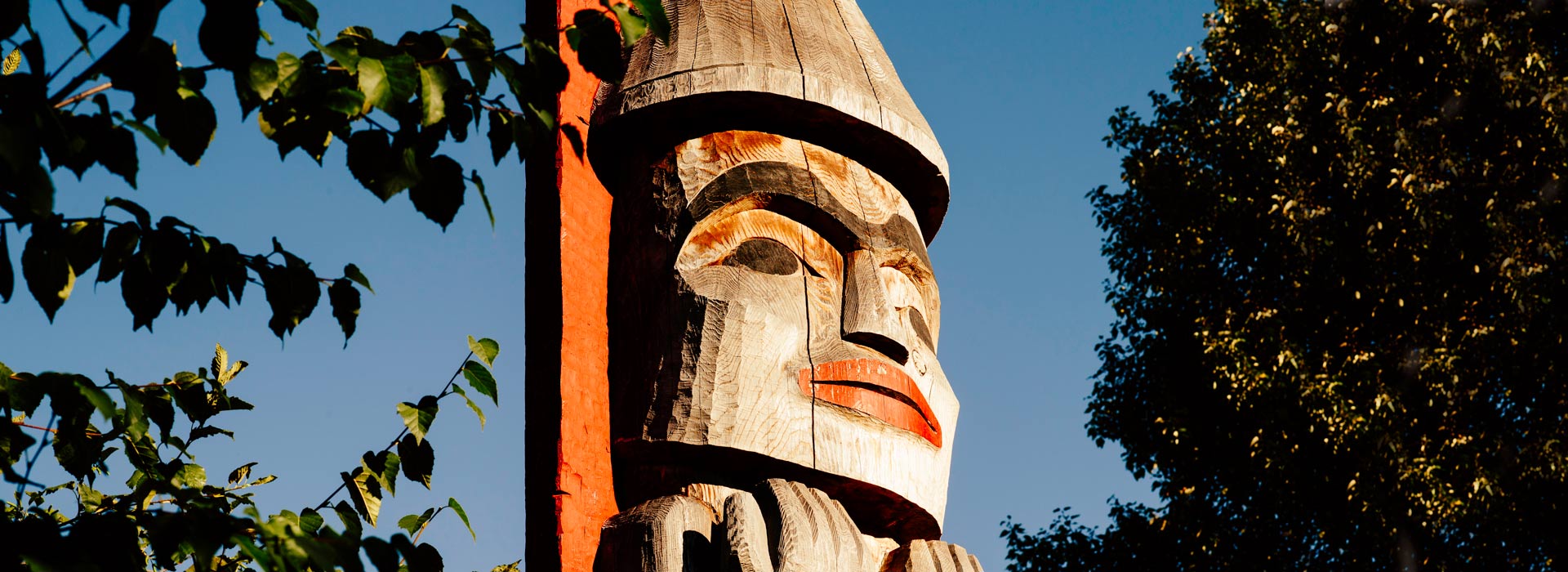
As part of the wealth of information Whistler tourism has available, we invite you to learn some local BC First Nations facts. Since our Squamish and Lil’wat cultures are unique to this area, we include answers to the most frequently asked questions posed by our visitors.
In 1997, the Resort Municipality of Whistler engaged the Lil’wat Nation to discuss opportunities for First Nations participation and presence in Whistler. The highlight of the meeting was the Cultural Centre property long-term land lease and significant property tax and development cost concessions negotiated with the province. In 1999, the Lil’wat Nation met with the Squamish Nation to discuss issues of land use and planning in areas of traditional territory overlap.
The Squamish Nation and Lil’wat Nation signed a ‘Protocol Agreement’ in 2001. The focus of this historic Protocol Agreement was to identify and investigate new economic opportunities for the mutual benefit of both Nations. Through joint decision-making, each Nation can express mutual respect for other’s historic presence in the region, shared history and culture, and protect our unique rights to Aboriginal title. Under the Protocol Agreement, we joined together to develop the Cultural Centre. The Squamish Lil’wat Cultural Centre and Community Society, a not-for-profit BC registered charitable society, was created to operate the Cultural Centre on behalf of both Nations.
The Vancouver 2010 Olympic and Paralympic Winter Games took place in the shared traditional territories of the Squamish Nation and Lil’wat Nation. The Vancouver Organizing Committee for the 2010 Olympic and Paralympic Winter Games (VANOC) and the Province of BC were committed to the meaningful involvement of our Nations in hosting a successful 2010 Winter Games. The tangible expression of this commitment to the Nations’ participation is indicated by the signing in 2002 of the Partners Creating Shared Legacies from the 2010 Olympic Games and Paralympic Winter Games between the Squamish Nation, the Lil’wat Nation, the Vancouver 2010 Bid Corporation, and the Province of BC. The agreement sets out legacies and benefits related to the full and meaningful involvement of our two Nations in the 2010 Winter Games. It is unprecedented in the history of the Olympic movement. VANOC and the Province of BC also committed to assisting the Nations to secure the resources required to complete the construction, raising the profile of the Cultural Centre, and providing opportunities for the hosting of Olympic and Paralympic events. VANOC’s support and encouragement led two of its Premier National Partners for the 2010 Winter Games to become interested in the project. Bell, the Premier National Communications Partner, has become the main Presenting Partner for the Cultural Centre and RBC, the Premier National Banking Partner, has also become a major partner.
In the Coast Salish culture of the Squamish people and the Interior Salish culture of the Lil’wat people, canoe carving was nearly a lost art. Master Carver, Khaápulk Sesiyam, Ray Natraoro spent years researching historical records and seeking advice from the elders in order to revive the unique Squamish style of carving.
The Squamish hunting canoe is 40 feet long- almost twice the height of the Great Hall ceiling. Named X̲aays Transformer Brothers, it was carved from a single cedar tree. It must be removed from the exhibition each year, and taken on an ocean journey to honor the spirit of the canoe.
The tree comes from a native village site in our territory — only a few trees that meet the criteria for building a canoe of this size are selected. The tree must have a base of more than 6 feet in diameter and a height of over 50 feet — much larger than most commercial logs.
As the principal carver, Ray Natraoro is involved with every step of the process, from tree selection, to curing the wood, and carving the tree. Once the canoe is ready, Ray and the other carvers attend the blessing and the canoe’s official launch.
Wool weaving is a traditional art form of the Salish people of British Columbia and Washington, who have been called the Weavers of the Pacific Northwest. Long ago, they isolated a specialized breed of dog from which they combed and harvested hair for weaving. They also gathered mountain goat hair from trees the animals rubbed against to help shed their winter coats.
The blankets hanging in the Cultural Centre represent the first time in over a hundred years that a weaving project of this magnitude has been undertaken. Each one of the blankets in the exhibit is hand woven with each inch representing over one thousand lovingly executed hand movements. Over 140 weavers from the Coast Salish territory have trained with Chepximiya Siyam Chief Janice George and Skwetsimeltxew Buddy Joseph, both of the Squamish Nation. For the Cultural Centre project, ten Squamish Nation weavers were specially chosen to design and create the ten monumental and distinctly different weavings. The techniques used for these weavings were based on those of the blankets worn by a delegation of BC Chiefs on the occasion of their famous trip to London to meet with King Edward VII about land issues in 1906.
Basket weaving is one of the oldest First Nations crafts. The Lil’wat are particularly known for their craftsmanship and their unique basket weaving patterns.
Master basket weaver Antúl’ya7 Vera Edmonds learned the art from her grandmother when she was a little girl, but didn’t weave regularly until she became a grandmother — when it became important to pass tradition to her children and grandchildren. Vera was asked to help select and train a number of weavers from her Nation. She was given the challenge of making three mats — in larger dimensions than had ever been made in their history.
Using the ingenuity for which her people are known, Vera extrapolated the method for making the bottom of a basket and extended it to the size of the mats. This required specially cut wooden slats for the backbone of the weaving and cutting the cherry and cedar bark in unusual dimensions. While baskets are made by individual weavers, each of the mats required two people at a time to work on it — one for each side.
Selecting the right material for weaving is an art in of itself that involves sourcing, harvesting, and preparing materials long before the weavers begin to fashion a basket, mat, or hat. A portion of bark is carefully stripped from select cedar trees, leaving the healthy tree intact to continue thriving. Other cedar trees are selected for their roots. Both bark and roots are generally harvested in the spring when they are more pliable. The bark is stripped and separated into layers, the inner cedar bark has the most diverse uses. Roots are coaxed, rather than yanked, in order to acquire long fibers. The roots are split into four pieces lengthwise, with the additional core of the root used for the coil. Cherry bark is used for decorative designs. The red color indicates that it has been used in its natural form, and the black color comes from soaking the cherry bark in a slough for up to a year to absorb minerals from the water. Canary grass is also harvested, soaked, dried, flattened, and split for use as a design feature.
“We spoke the language every day, learning the Lil’wat names for everything we used. Every day each of us introduced ourselves by our traditional names. Everyday we asked the Creator and the ancestors to be with us, to guide us to use our hands well, to give us patience.”
Antúl’ya7 Vera Edmonds
From birth to death, the cedar tree has provided the gifts of shelter, clothing, transportation, art, regalia, baskets, cradles, and even burial boxes. Cedar bark is taken off in a long strip from one side of the tree; cedar roots are selectively harvested without harming the tree. The bark and roots are used for baskets, hats, cradles, and many other functions. Entire trees are used to make canoes, houses, ceremonial regalia, treasure boxes, and many other things.
The Squamish people and Lil’wat people each have distinctly different ancient cultures, anchored to the lands in which they have lived from time immemorial. While they are integrated into the fabric of Canadian society and now live in the same kind of houses as everyone else, they maintain their traditions through ceremony and family gatherings. Elders are still the culture keepers, keeping the memory of the ancestors alive by teaching the old ways — retelling the stories, passing on knowledge of the language, dancing, carving, and weaving.
Yes, the Squamish people speak Skwxwú7mesh and the Lil’wat people speak Ucwalmícwts.
Prior to the mid 1960s there was no written system for the Squamish language since the language and culture of the Squamish people is grounded in an oral tradition. A prominent elder, Louis Miranda, felt strongly that the language was in peril and worked with linguists from several institutions to develop a written system. This system has since been adopted as the official written language of the Squamish Nation.
The Lil’wat language, while different than that of the Squamish, shares many common words, most likely developed as a result of the extensive trading between the Nations. The Lil’wat language has 35 letters in its alphabet.
Both languages share a “7” in their language. It acts as a glottal stop or “catch in the throat,” a super apostrophe. For example, the word “Spo7ez” is pronounced “spo” (slight pause) “ez.” Today, most Squamish and Lil’wat children are encouraged to learn the language at school, and many ceremonial occasions are led by people who are fluent in the language.
Our logo represents two Nations on a shared journey. The red color represents a traditional paint made from a natural source which was used in art, healing, and spirituality. The stepped geometric pattern, found on many Lil’wat baskets, reflects the mountains and valleys of our Interior Salish Nation. The “Salish eye” shape represents the watchful eyes of past and future generations. It adorns Squamish carvings such as those found on paddles and hulls of the magnificent seagoing canoes of our Coastal Salish Nation. These two shapes are brought together in a circle representing a spindle whorl, a tool used by both Nations to spin mountain goat wool for weaving.
The positioning line for the Centre, “where rivers, mountains and people meet,” was the result of consultation with our communities and elders. The words “rivers,” “mountains,” “people,” and “meeting or coming together” echoed throughout the sessions.
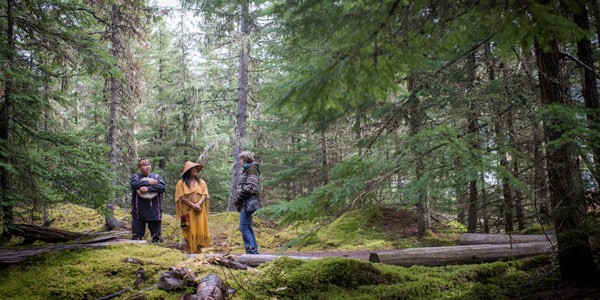
When the site was under construction, a mother bear and her cub wandered through the building. In First Nations culture, we understood that the bear has blessed the building and that it will be good for our families, as well as for other families who come to visit.
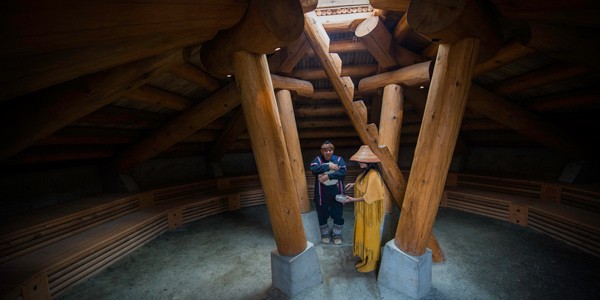
An Istken is a traditional underground pit house used by our Lil’wat people in times past. Because it is built into the earth, which maintains a more constant temperature than air — it was warm in winter and cool in summer.
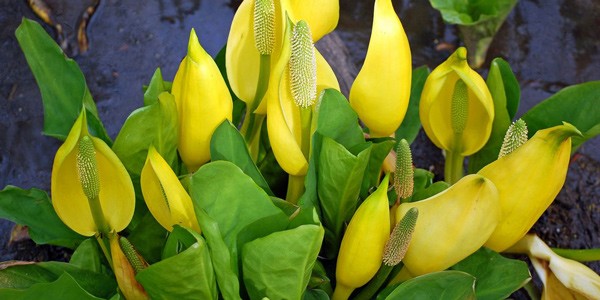
Skunk cabbage, which grows in swampy areas and has bright yellow flower, is one of the first foods for local Whistler bears when they emerge from their dens. The plant radiates its own heat and its leaves are used medicinally by our people to soothe aches and pains.
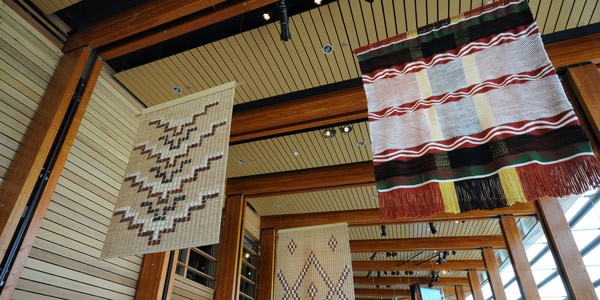
Many of the wool weavings on display in the Cultural Centre are based on designs and weaving techniques used in blankets worn by a delegation of Squamish Chiefs who travelled to England to discuss their concerns about land issues with King Edward VII in 1906.
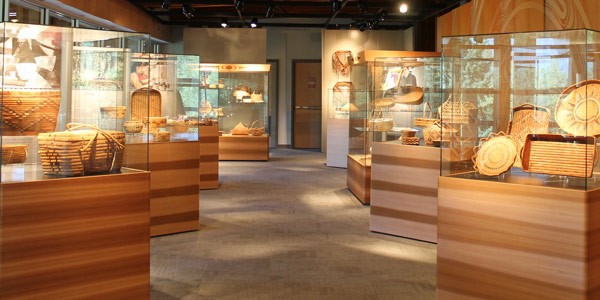
In Lil’wat basket weaving, black bark is given its color by soaking cherry bark in a slough for up to one year. Cedar bark and roots can only be gathered at specific times of the year and must be split and dried before weaving them.
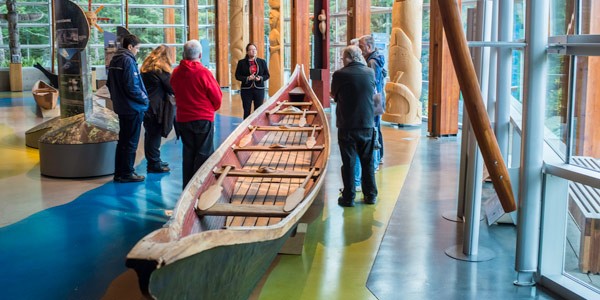
The Heritage Canoe Carving Apprenticeship Project is creating a number of canoes in styles that have not been built in the community for several generations. They include the chachu7- Salish hunting/ travelling canoe, the kxwu7lh-Salish travelling canoe, the snech’elhp-shovelnose river canoe, and the Salish old-style racing canoe.
Knowledgeable Cultural Ambassadors share their cultural teachings with guests during guided tours; visit our Group Tours page for more information.
Discover our unique style of modern First Nation’s cuisine such as bannock, salmon and venison. Visit the Thunderbird Café.
Discover our unique selection of First Nations merchandise ranging from handcrafted works of art, to home accents, clothing and accessories, jewellery, pottery, baskets, books and souvenir merchandise. Visit the Gallery & Gift Shop.
Weddings at the SLCC are some of the most spectacular; learn more about our venue as your wedding location by visiting slcc.ca/weddings.